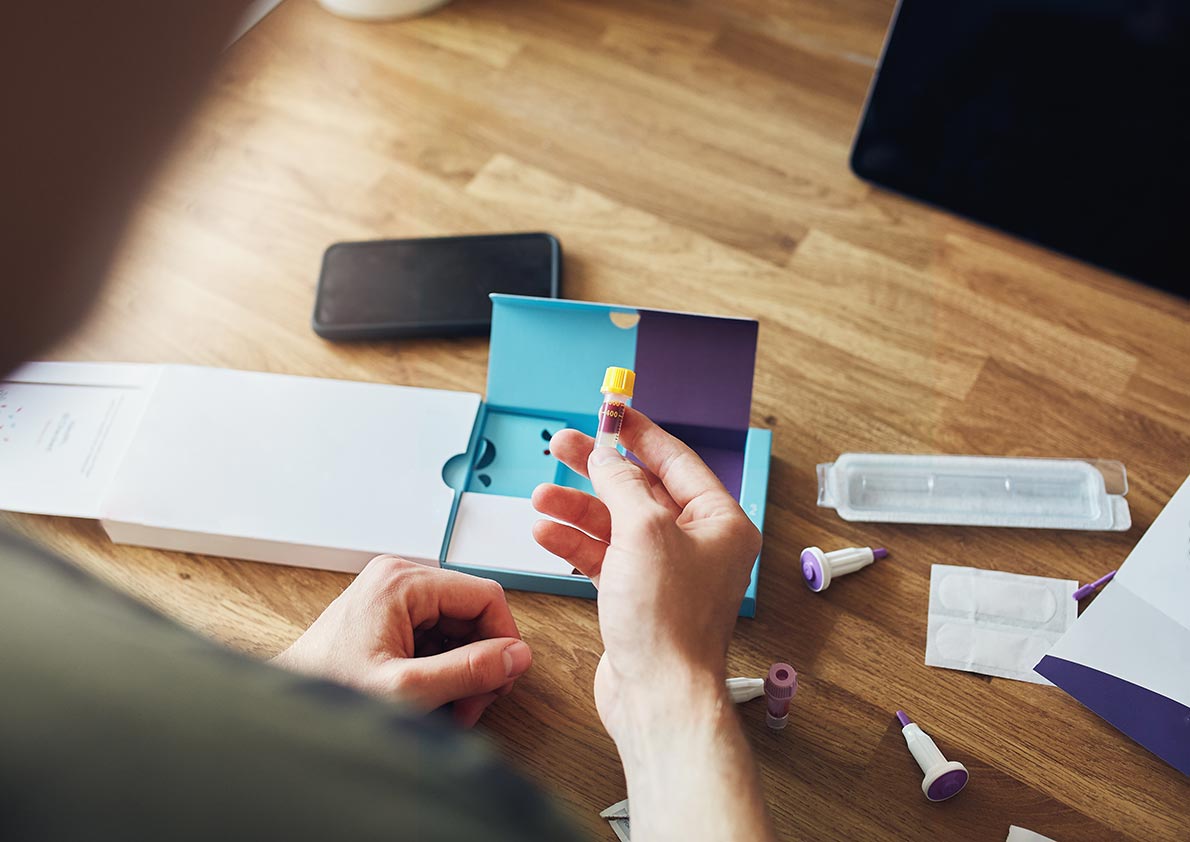Are you male, over 30 years old and feeling more tired than you ever felt before?
Do you find it hard to concentrate?
Is your libido on the downswing?
These are all symptoms of low testosterone. The most recent studies show one in four men older than 30 has low testosterone. Could you or someone you know be one of them?
A blood test for low testosterone defines it as 300ng/dL (nanograms per deciliter) of total testosterone and less than 5 ng/dL of free testosterone. But is low testosterone dangerous? What are the low testosterone treatment options?
Read on to learn more.
Low Testosterone Symptoms
Low testosterone, or androgen deficiency, is a problem in the male population. It is thought to be responsible for many symptoms. Virility, reproduction, maintenance of muscle mass and bone mass are related to healthy levels of testosterone.
What happens when the body does not make enough testosterone? Not all people have all the symptoms. Also, the severity of symptoms may vary.
Mood Swings
Menopausal and peri-menopausal women sometimes experience hormonal mood swings. Men can also experience changes in mood stability. Plummeting testosterone levels can leave you easily depressed and irritated.
Testosterone levels cyclically decline at the end of each day. A post-work dip in mood is normal. However, if you find that your spirits stay slumped much the time, then it’s a cause for examination.
Physical Properties
Men who suddenly need to work harder to maintain fitness or who cannot seem to put on muscle may suffer from androgen deficiency. Men with chronically low testosterone lose muscle mass and bone mass. They also have an increase in body fat percentage.
Add this to the energy-sapping effect of low mood and it leads to a lesser quality of life.
Impotence
Low libido can result from a lack of testosterone. It can affect the quality and frequency of erections. Bringing testosterone levels into balance can alleviate these unfortunate symptoms.
Restoring sex drive and function also has a positive effect on mood, too.
Persistent Tiredness
It’s normal for adults to experience occasional tiredness throughout the day. However, if you experience chronic fatigue, despite a good night’s sleep, it could be serious.
If they rule other physical maladies out and you have a balanced diet, exercise routine and rest periods, then low testosterone may cause your tiredness.
Impaired Cognition
Difficulty concentrating, a lack of focus and fuzzy memory are often complaints of aging. They are also a sign of persistent androgen deficiency. Men often complain of symptoms that include the loss of memory function and verbal abilities.
Having regularly low testosterone levels makes it difficult to focus and concentrate. Mental and physical symptoms have a major impact on your life.
Is Low Testosterone Dangerous?
Testosterone deficiency can cause decreased libido, erectile dysfunction, decreased stamina, and depressed mood. Sometimes the symptoms are unnoticeable, sometimes more severe.
Lack of sufficient testosterone results in lowered muscle mass and tone, loss of bone mass and increased body fat percentage. A lack of testosterone is connected to slowed healing.
There is a body of evidence that suggests a relationship between low testosterone and chronic disease. Low testosterone is related to a higher risk of cardiovascular disease.
Testing for Androgen Deficiency
General health screening does not normally include testing for serum testosterone levels. A physician must suspect a problem. Men with a history of unexplained anemia, bone density loss or diabetes, for example.
If you have been exposed to chemotherapy, radiation, or excessive x-rays, your doctor may order testing. HIV/AIDS, drug use, infertility, pituitary dysfunction, or chronic steroid use rate testing, too.
In addition to blood tests, a doctor may use the quantitative ADAM questionnaire. This tool in combination with blood tests can help doctors find androgen deficiencies and quantify the severity of symptoms.
What Causes Low Testosterone?
Impaired testosterone production at the level of the testes is called primary hypogonadism. This means that the testes receive the chemical message to make and release testosterone, but can’t.
Secondary hypogonadism refers to a disruption of the hypothalamic-pituitary-gonadal (hormonal) axis. This means that the testes are capable of manufacturing testosterone, but aren’t getting the message to do so.
Either cause warrants an investigation. Treatment options for low testosterone vary. It’s important to have a thorough medical examination.
Be honest with your doctor. Treating low testosterone takes time and precision. If you have any other medical conditions, it may take longer to achieve positive results. Diabetes, obesity and other medications for chronic illnesses affect how quickly your body responds.
Low Testosterone Treatment Options
Reasons for androgen deficiency range from injury to disease or environmental factors. Obviously, treatment should address these underlying factors. No single option alone will relieve all symptoms.
Stress is a common culprit in low testosterone. So is a lack of sufficient rest. For those reasons, yoga is often a recommended treatment. Additional sleep can’t hurt, either.
Environmental factors such as obesogen exposure affect your testosterone production and uptake too. Limiting exposure to these artificial estrogen-like hormones can help alleviate symptoms. Diet changes and exercise contribute.
Consider TRT
Sometimes, lifestyle changes aren’t enough. Testosterone Replacement Therapy or TRT is a medical treatment to help your body repair the effects of too little testosterone. Therapy to treat your testosterone levels helps you get back to normal.
Testosterone delivery methods vary. Oral medications pass through the digestive system and into the bloodstream. Injections bypass the digestive system. Creams and patches pass androgens directly through the skin.
Studies show that TRT medications have different results for different patients. Your doctor may try several different dosages and delivery methods for optimum results. Your dosage will be particular to the delivery method and body type.
What Is Involved in TRT?
The goal of therapy is to boost testosterone levels and balance the ratio of testosterone to estrogen-like hormones. When the body has a correctly balanced hormone level, you feel better.
Your therapy plan includes diet, exercise and lifestyle changes as well as medication. TRT is incomplete without support from healthy meals and consistent exercise. People who commit to their treatment plan have better and more successful results.
Look for improvements after a month or six weeks. Many patients see some changes even sooner, although sometimes it takes longer. The timeline depends on treatment methods and compliance.
Your physician will have lab tests done on the fifth week of treatment. If your body doesn’t respond, your doctor may make adjustments to the dose or method of delivery.
Pills, Needles, and Creams
The effect of testosterone boosters varies depending on the size of the dose and the patient reaction. Each delivery method has its positives and negatives. You need to understand both in order to choose your best option.
Many doctors feel that injections are the most effective. However, many people are squeamish about giving themselves injections regularly. Intramuscular injections can also be very uncomfortable.
Oral medications are the least popular form of delivery. Precise doses are difficult due to the differences in digestion between people. The least invasive and most popular forms of TRT are patches or metered doses of Andro-Gel cream.
Andro-Gel is easy to apply, discreetly at home. It does need to be applied carefully and covered, since it may be dangerous to transfer to the skin of another person. Patches are another good option for people who dislike needles.
The TRT Treatment Timeline
One of the most frequently asked questions is, “how long will TRT take for results?” The TRT timeline is different for each patient. There are many different factors that affect how quickly the body responds to treatment.
Any underlying medical conditions and the beginning level of testosterone affect your body’s response. Consider the symptoms addressed and how well you conform to your doctor’s recommendations.
Proper treatment management results in symptom improvement in just a few doses. However, it takes some time for levels to normalize. Some symptoms take a longer course of treatment.
Results in Weeks or Months?
Some men suffering from low libido report decreased symptoms in about a month. Patients with erectile dysfunction might see better functioning after six months of TRT.
Your TRT timeline is unique to your symptoms and body. The effect of low testosterone treatment of different systems of the body takes time.
If you have any additional medical conditions, it may slow your progress towards positive results. Diabetes, chronic asthma, and obesity are conditions that can prolong the TRT timeline. Also, the medications for chronic illnesses like asthma can affect how quickly your dosage starts to work.
TRT Expectations
TRT balances out your testosterone and hormone levels. This is important because testosterone is not the only hormone involved with your body’s energy, immunity, endurance, and growth.
After all, testosterone has more to do than give you muscles and body hair. When you suffer from low testosterone, it affects your mental focus and clarity. You may have trouble remembering information. It can affect your relationships and lead to depression.
Look for large and small changes as you begin treatment. Many effects begin immediately or soon after beginning therapy.
Mood Improvements
Symptoms of low testosterone like depression, anxiety, and fatigue should improve as testosterone and hormone levels normalize. Results vary for each patient undergoing hormone treatment.
Men with hypogonadism can expect a boost in mood and well-being after successful TRT.
Physical Endurance
Testosterone plays an important role in bone health. It increases mineral density. Strong bones are less prone to injury.
Muscle growth and fat percentage are regulated by the testosterone-estrogen balance. Improvements to the balance result in stronger, more defined muscles and a lower body fat percentage.
This is why TRT helps men with androgen deficiencies improve their physique. Balanced hormones can improve physical performance and overall wellness.
Sexual Health
Low testosterone leads to a low sex drive. It can also result in poor quality erections and impotence. TRT can improve testosterone levels and help return function to men with hypogonadism.
Improved Cognition
Patients undergoing TRT may notice an improvement in verbal ability and spatial memory. Complaints of focus and organization may resolve with TRT.
For patients with low testosterone and multiple symptoms, testosterone therapy may be the best solution.
Choose the Right Doctor
The best choice for positive results is treatment from a specialized physician. It’s vital to select a physician who specializes in testosterone replacement therapy. Look for a team with board certifications.
Only accept a plan for treatment after thorough testing. The test for low testosterone is a blood test that tells your physician if your hormone level is too high or too low. Your doctor should perform this test more than once to get accurate results.
A questionnaire or interview should be part of the process. Look for a plan customized just for you. An FDA-approved treatment includes only safe sources of high-quality testosterone.
Are You Ready to Discuss Your Low Testosterone Treatment Options?
If you’ve been suffering from the long list of symptoms and just want your old vitality and vigor back, TRT may be the right answer. It’s time to talk to a doctor about your low testosterone treatment options.
The warning signals of low testosterone are clear. Your doctor will need to order several tests. There is no reason to accept the loss of energy, low libido or bone density loss as irreversible signs of aging.
Living with weight gain, decreased cognition or mood changes aren’t the only options. TRT with lifestyle changes are solutions to get you feeling upbeat, vigorous, and focused again. In as little as 4 -6 weeks, you may see results.
Are you ready to learn more about how TRT can work for you? Schedule a consultation with our expert team of testosterone replacement treatment specialists today.



